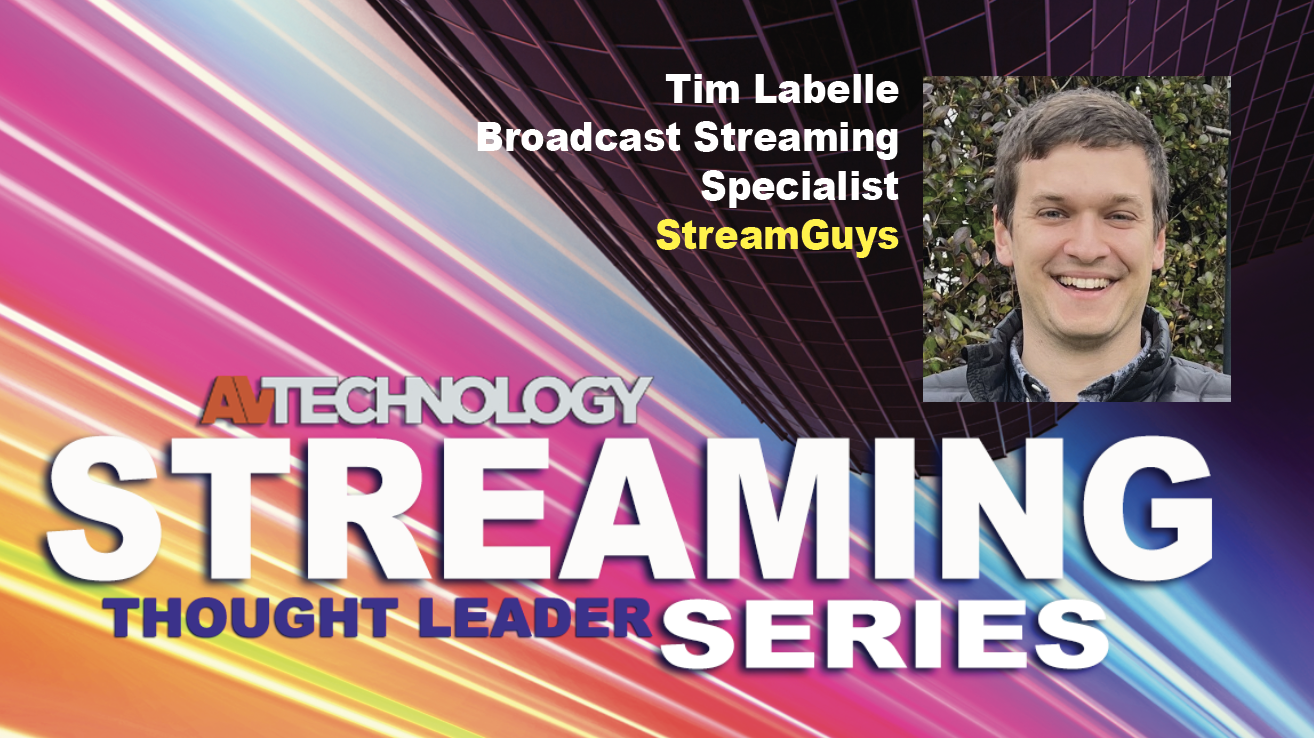On Streaming: StreamGuys
Tim Labelle, Broadcast Streaming Specialist at StreamGuys shares insight into trends and best practices for the next-gen streaming media ecosystem.

AVT Question: Please share insight and best practices for planning to integrate the next-gen streaming media ecosystem.
Thought Leader: Tim Labelle, Broadcast Streaming Specialist at StreamGuys
When setting up a streaming environment, it’s helpful to start with an assessment of existing workflows, followed by an evaluation of technical requirements and pre-production testing. It’s crucial to confirm whether the current workflows support the streaming goals of the organization. For example, if the existing tools can output video ingest protocols like RTMP, such as Teams or Zoom, then use those tools with your streaming environment as nearly all streaming platforms accept RTMP. This is important if the organization is already producing content, and is simply adding the streaming layer. We prefer to keep the tools that the user is familiar with and only replace tools when needed.
Test the stream on the range of devices and network qualities you expect viewers to be using." —Tim Labelle, Broadcast Streaming Specialist at StreamGuys
Be sure to establish all technical requirements with the project’s stakeholders. Ideally, this happens in advance, but discussions with vendors often uncover essential needs that are absent. Common requirements may include latency, tokenization or encryption, transcoding, adaptive bitrate, closed captioning, and stream archiving. That requirement list will direct you to or away from specific technologies and CDNs. The next step is to discuss those requirements with a handful of CDNs to find the right fit for this project.
Source quality is everything in streaming, so use a consistent wired network connection if possible. When using a professional streaming encoder, SRT is preferred for its improved reliability over RTMP or HLS.
Finally, always test the full signal chain before going live. This ensures your production team, content producers, AV gear, encoder, network, and CDN all do their jobs. This is the time to catch and resolve issues. Test the stream on the range of devices and network qualities you expect viewers to be using. For example, that 12 Mbps video stream will look great when testing in your office, but won’t work at all if a viewer has less than ideal cellular coverage.
[15 AV/IT Thought Leaders On Streaming]
A daily selection of features, industry news, and analysis for tech managers. Sign up below.
Macy O'Hearn has been a contributing writer to AV Technology since 2019 where her focus is working on the Technology Manager's Guides. In addition, O'Hearn has contributed articles to SCN, and is the editor for the 2022, 2023, and 2024 Digital Signage magazine.
